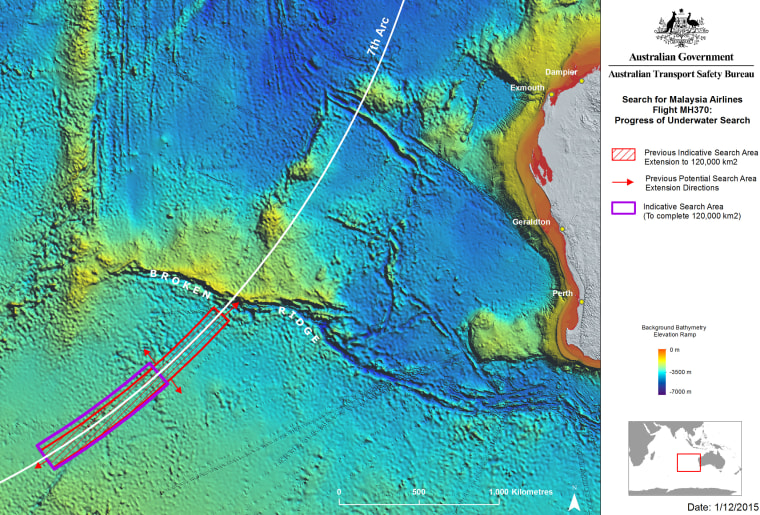Poor weather in the southern Indian Ocean has delayed the search for missing Malaysia Airlines Flight MH370 for almost two months, authorities warned Wednesday.
Bad conditions in the region are making it impossible to use the robot submersible needed to explore hidden canyons on the sea bed, Australia’s Transportation Safety Bureau (ATSB) said in an update.
More than 90 per cent of the 46,000-square mile search zone — an underwater area the size of Pennsylvania — has been covered but with no sign of the Boeing 777, which vanished on March 8, 2014. It had 239 people on board.
The countries involved in the operation — China, Australia and Malaysia — have agreed to end the effort if nothing is found in the current search area or if no credible new information leads them to a specific location for the wreckage.
"The instinct of a professional investigator would be to find this aircraft so we can find evidence that will help us solve the mystery of what happened"
The search was due to be completed in July or August, but the ATSB warned Wednesday that this could slide, saying only that the delay could take the completion date “well beyond the [southern hemisphere] winter months.”
“Ongoing poor weather conditions have severely impacted search operations and resulted in delays to search operations of around 6-8 weeks,” it said.
“The autonomous underwater vehicle (AUV) which is used to survey some of the most difficult portions of the search area such as the underwater canyon areas that cannot be searched effectively using the deep tow sonar, can only be launched in the calmer conditions of [southern hemisphere] spring and summer.
“In the event of further poor weather, or delays as a result of unforeseeable problems such as equipment failure or crew incapacity, searching the entire [46,000 square mile] search area may continue well beyond the winter months.”
The delay could buy time for authorities before taking the difficult and unprecedented step of abandoning the search effort.
Earlier this month, the retiring chief of the ATSB, Martin Dolan, told The Australian newspaper that he would prefer to see the search continue if funding could be found.
“This has been two years of our lives focused on this task, so of course you want to see it to completion — of course we want to find that aircraft,” he was quoted as saying.
“The instinct of a professional investigator would be to find this aircraft so we can find evidence that will help us solve the mystery of what happened. But I also recognize there comes a point when governments have to make a decision about the level of resourcing that can be made available.”

